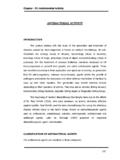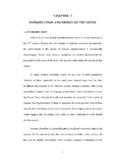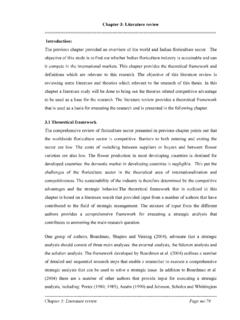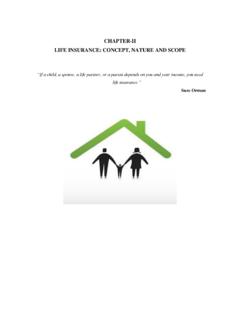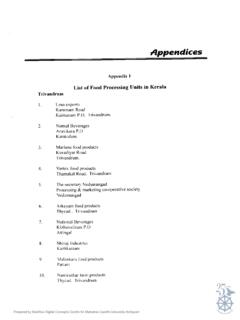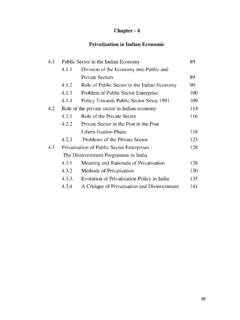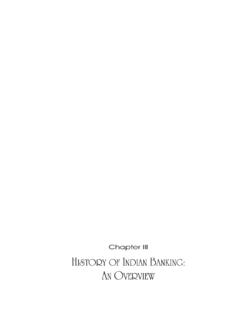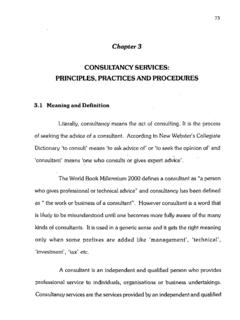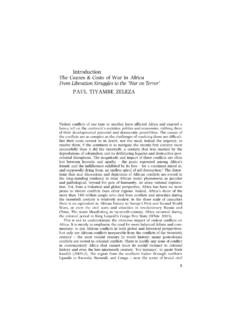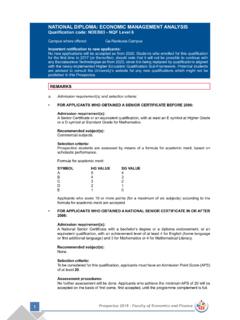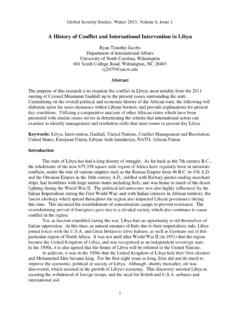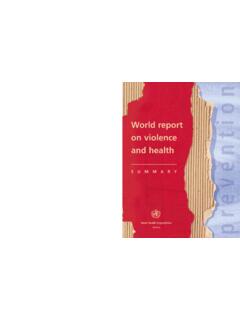Transcription of CHAPTER 2 THEORIES OF CONFLICT - Shodhganga
1 THEORIES of CONFLICT CHAPTER 2. THEORIES OF CONFLICT . 15. THEORIES of CONFLICT THEORIES OF CONFLICT . CONFLICT is a pervasive element in our society. There is a possibility that it could occur at any time in our society. It can occur between persons, group, organizations and nations. The growth in the gap between the rich and poor has become inevitable with the emergence of industrial societies and free market economic systems. The development of more destructive technologies and the willingness to use them indiscriminately increased the cost for forceful solution of CONFLICT . The last century survived in two Great World War and many of regional wars. Unfortunately, the new millennium started with many acts of terrorism and wars. Latest in this row was Iraq and Afghanistan war. CONFLICT Theory The roots of modern THEORIES of CONFLICT can be traced back to Max Weber, Karl Max and Sigmund Freud.
2 Machiavelli, Clausewitz and Adam Smith are important writers in western tradition of CONFLICT analysis. There have been different theoretical approaches to understanding CONFLICT . Psychologists have focused on intrapersonal conflicts . Social psychologists have concentrated on inter-personal and 16. THEORIES of CONFLICT inter-group conflicts . Economists have focused on economic competitions, labour negotiations and trade disputes. Political scientists have specialized in political and international issues. The word CONFLICT ' has many meanings in every day life. In a broad sense the term CONFLICT ' includes disagreements, debates, disputes and active efforts to prevent someone from obtaining what he wants to secure. The term CONFLICT , Roderick ogley simply defines as incompatibility in the aim, goals or interests of two or more individuals, groups or other units1.
3 Some thinkers define CONFLICT as a state of mutual antagonism or hostility between two or more parties. Origin of the word CONFLICT '. Many reasons are behind the origin of CONFLICT ' in our society. Early in this CHAPTER we have defined definition of CONFLICT . Many theoreticians have expressed their views on the origin of the word CONFLICT at different levels. CONFLICT is generally considered as a tendency to perform two or more incompatible responses at the same time, resulting in emotional, mental and physical levels. The incompatible action may originate within individuals or between, two or more individuals or within groups or two or more groups. Kenneth 17. THEORIES of CONFLICT Boulding says, CONFLICT exists when any potential positions of two behaviour units are mutually incompatible 2. A classic understanding of CONFLICT is a dynamic phenomenon; one actor is reacting to what another actor is doing, which leads to further action.
4 Quickly, the conflicts escalate. One sequence of events follows another, and it is difficult to decipher which party is more responsible for what happens. In popular understanding it is expressed as it takes two to CONFLICT '3. Both parties are right to think that the other side is provocative, dangerous and malevolent. Each side, however, is blind its own policies and behaviour contribute to the development of the other's hostility. conflicts may arise then the parties are like players, competing for the same prize such as power, position, authority, territory or materials or disagreements about the rule of the game. There are various factors enhancing the CONFLICT behaviour in parties. Misperception, impoverished communication, hostile attitudes, over sensitivity to difference, misjudgments, anarchic social situations and competitive spirit lead to distorted views that may intensify and perpetuate conflicts .
5 18. THEORIES of CONFLICT Ho-won Jeong is an international peace researcher who pointed out that relative deprivation, dissatisfaction of basic needs, failure of organizational functions, asymmetric power relations and dominant social structures are the important components in the origin of conflict4. Relative deprivation exists when people feel that their expectations of conditions for life have not been satisfied. If people's hopes and desires far exceed what they can realize, they may have more dissatisfaction with their current situations. The expectation to improve unsatisfied material and social conditions tends to go up with time. However, the economic and social capacity to meet these expectations does not increase simultaneously. Their expectations are likely to rise disproportionately to what society can actually provide. Frustration deepens when manifested reality does not match anticipated reality5.
6 Basic requirements of human beings are both physical and psychological needs. Food, shelter and other basic material necessities are needed for physical survival. Love, affection, security and self-esteem satisfy psychological needs. Lack of this physical and psychological conditions of human beings are responsible for the stage of conflicts6. Power imbalance of human beings can have possibility to asymmetric relations. The unequal distribution of decision-making 19. THEORIES of CONFLICT power is a source of latent CONFLICT . The structural origin of group conflicts can be related to the arrangements of social roles attached to domination and subjection. The two distinctive sets of groups are produced by authority relations. One group has a position of domination while the other is in a position of subjection. Opposed interests derive from power differences and then to conflict7.
7 Characteristics of conflicts The nature of CONFLICT can be understood in terms of how the problems are defined and framed. In general conflicts between opposing parties are differences of opinion and interest. Each CONFLICT has its own peculiarities, their qualities are different. Some conflicts are classified in the character-basis is symmetric and asymmetric. The CONFLICT of interest between relatively similar parties is called symmetric CONFLICT . That means CONFLICT between two individuals, two employees and two similar organizations etc. conflicts may also arise between dissimilar parties such as a majority and a minority, an established employer and his employees, a Government and group of rebels, a master and his servants etc. In asymmetric CONFLICT , structure 20. THEORIES of CONFLICT has possibility to top-level party always win, lowest level party always loses8.
8 Another important character in the analysis of CONFLICT is realistic and nonrealistic conflicts . There is some distinction between realistic and nonrealistic CONFLICT . Realistic CONFLICT has specific outcome, but nonrealistic CONFLICT has no specific outcome. The source of realistic conflicts exists in every social system as long as people raise opposing claims to power, positions and economic resources as well as argue about different values. The realistic CONFLICT resolves easily but it has some specific intentions. The non realistic conflicts have, provided tensions and hostilities. It is created only in unsatisfactory situations9. In another type of CONFLICT is protracted CONFLICT , these conflicts persists for very long periods, some for generations after generations, socio economic, political, religious conditions last for years.
9 Internal and external conditions are enhancing the CONFLICT situations. For Edward Azar, a peace researcher conducted many studies in the field of protracted conflicts10. Srilanka's ethnic conflicts , Israel-Arabic dispute, Chinese- Tibet, Indo Pakistan issue are the best examples of protracted conflicts . 21. THEORIES of CONFLICT Types of conflicts CONFLICT can be classified by the forms and structure. Some different types of conflicts are described below. a. Individual CONFLICT Individual CONFLICT occurs in two ways. One is within individual; other is in between two or more individuals. An intra- psychic CONFLICT is the CONFLICT which an individual experiences within the self. It arises from our drives, instincts and values pulling against one another. Intra-psychic CONFLICT is one of the precursors of interpersonal conflict11. Many social scientists have insisted that CONFLICT is a human invention, not biological necessity.
10 Different societies individuals create conflicts for different reasons, including pride, prestige, revenge and quest for resources. Communication is a vehicle to individuals in exposing their views, opinions and comments12. When two individuals are meeting together they are communicating their ideas. Under special conditions one individual cannot agree with another's ideas. Then it is in the stage of CONFLICT . The some psychiatrist mentioned that Frustration and Aggression is one of the important factors in human CONFLICT . Aggressive behaviour is produced by frustration which may be 22. THEORIES of CONFLICT increasing the discrepancy between expectations and realities13. Then the social system had major role in the individual's character formation. Their likes and dislikes, values and modes of behaviours are those of this social system.
